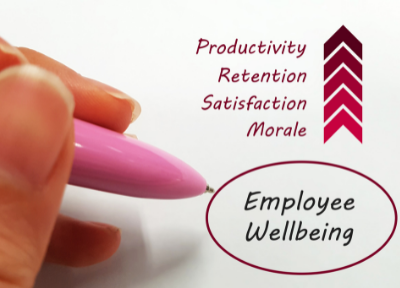
Workplace wellness programs have increased in the past several years to promote healthy diets and lifestyle, exercise and other behaviors such as quitting smoking. As of 2020, most employers had wellness programs of some kind, including 53% of small firms (those with 3-200 employees) and 81% of large companies. Since employees spend most of their waking hours on the job, wellness programs seem to be a natural fit to try to promote healthy changes in behavior. But, in 2022, employees want more; many workers are looking for employers who show authentic concern for their well-being.
Well-being is about how our lives are going. It’s not only about health and happiness but also about living life to its fullest potential. In fact, data shows that employees of all generations rank “the organization cares about the employees’ well-being” in their top three criteria.
Financial stress soared during the pandemic but so did regular stress, too. Mental health struggles such as anxiety, depression, and substance abuse are also climbing. These are expensive issues to ignore both in terms of the human suffering but also the company’s bottom line: Depression alone costs an estimated $210.5 billion per year. These costs are due to absenteeism (missed work days) and presenteeism (reduced productivity at work) as well as direct medical costs (outpatient and inpatient medical services and pharmacy costs).
Employers must recognize the interrelationship between the physical, financial, work and well-being components of employees’ lives. For example, employees who need help with their financial well-being are significantly less likely to be physically healthy and more likely to report feeling stressed or anxious which can impact productivity and job performance. Vice President for Communications at Fidelity Investments in Boston, Mike Shamrell, recognizes the need for all dimensions of wellness. “It’s tough to be well in one area when you’re unwell in another,” he said.
Well-being is often associated with gym memberships and green smoothies but it is much more than that; it is a result of many different aspects of one’s life. Here are 5 common dimensions of well-being that can be addressed through a workplace wellness program:
- Emotional/Mental Health – Understanding your feelings and coping with stress.
- Physical Health – Discovering how self-care can improve your life and productivity.
- Financial Health – Successfully managing your money.
- Social Connectedness – Creating and being a part of a support network.
- Occupational Well-Being– Feeling appreciated at work and satisfied in your contributions.
Great employees want great employers. Companies that want creative, high-performing teams must be willing to support workers both in and out of the office. Well-being has a major influence on an employee’s performance and satisfaction; employees who feel valued and appreciated are more invested in their company in return.
